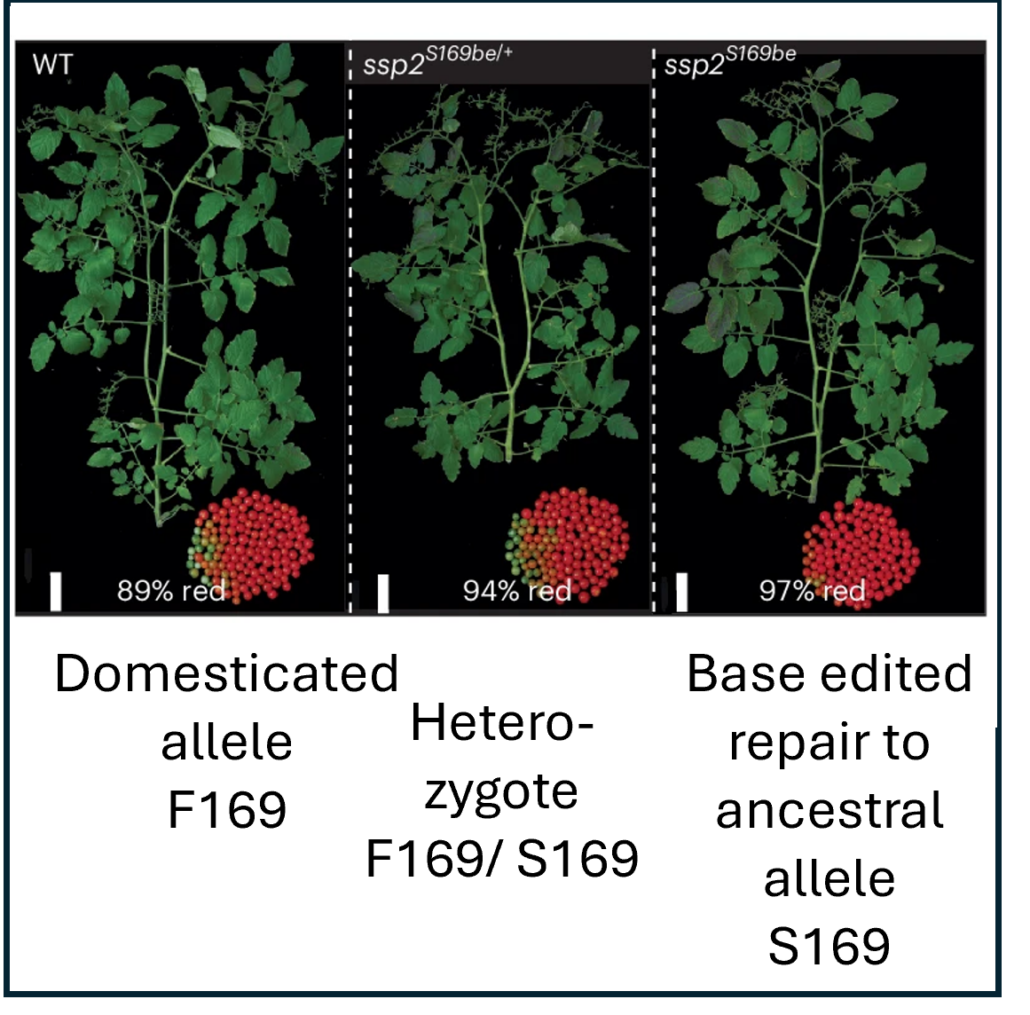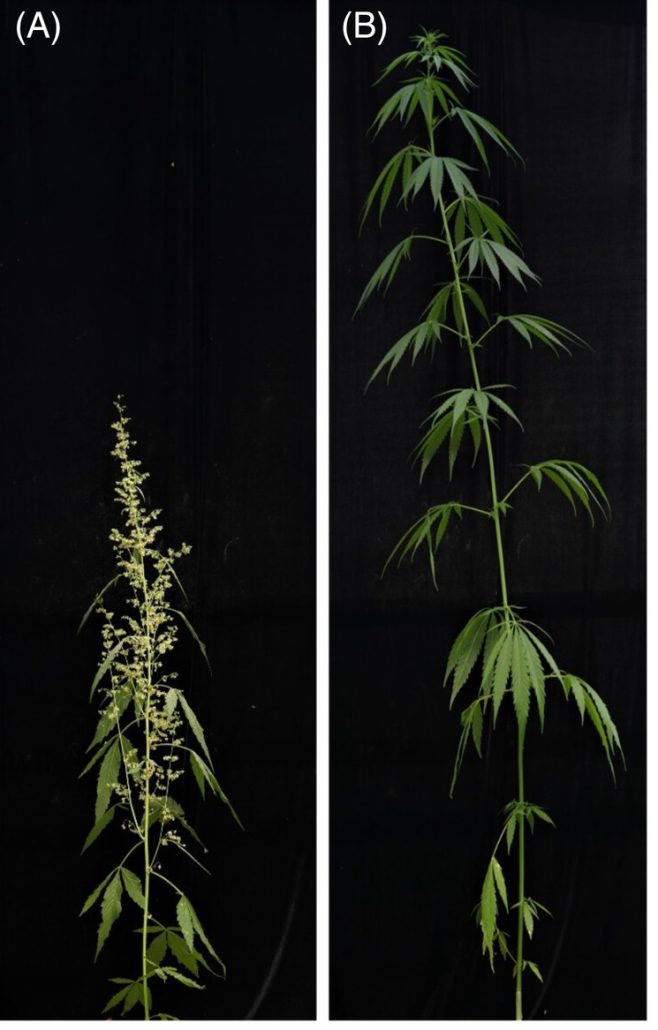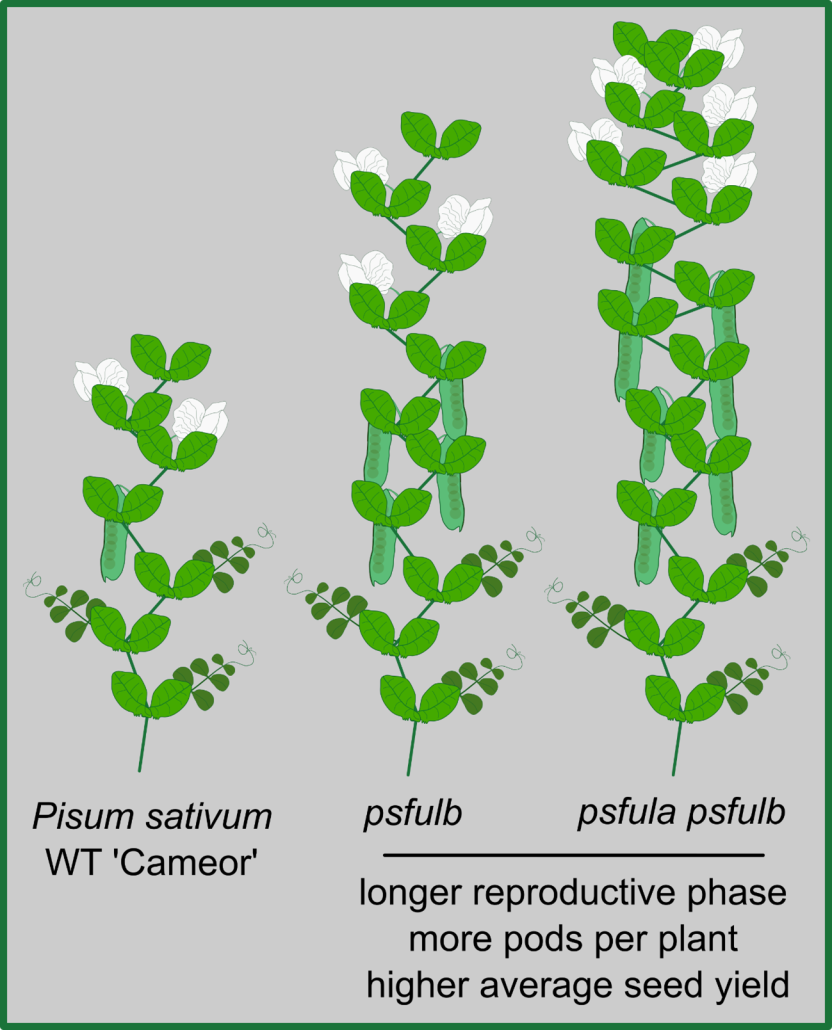
Repairing a detrimental domestication variant improves tomato harvests
Blog, Plant Science Research WeeklyDomesticated plants and animals are remarkable human achievements but were achieved with rather blunt instruments. With the benefit of hindsight, we can now see that some of the genes and alleles that passed through the population bottlenecks and artificial selection process are deleterious. Glaus et…

Photoperiod-insensitive flowering is associated with the FT gene in hemp
Plant Science Research WeeklyCannabis sativa, also known as hemp or marijuana, is a widely cultivated plant for a variety of reasons. It is perhaps best known as a producer of an intoxicating chemical, THC, produced by glandular trichomes on female flowers, but low-THC producers (hemp) are cultivated for fibers. Flowering time affects…

All fruit things come to an end: FRUITFULL controls end of flowering and seed yield in pea
Plant Science Research WeeklyThe onset of flowering is a tightly regulated process, as is the end of the reproductive phase in plants. In Arabidopsis thaliana, FRUITFULL (FUL) contributes to ending the reproductive cycle, as do signals derived from developing seeds. Here, Martínez-Fernández et al. explored to which extent that…

Nuclear pore Y-complex and regulation of FLOWERING LOCUS C in Arabidopsis
The Plant Cell: In a NutshellHuang et al. explore the functions of the nuclear pore complex in regulating the expression of FLOWERING LOCUS C in plants.
Penghui Huang1,2†, Xiaomei Zhang2†, Zhiyuan Cheng3†
1 Research Institute of Intelligent Computing, Zhejiang Lab, Hangzhou 310012, China
2 MARA Key Laboratory of…

The P-body component DECAPPING5 regulates flowering time via liquid-liquid phase separation
The Plant Cell: In a NutshellWang et al. investigate role of the DCP5-SSF complex in the nucleus
https://doi.org/10.1093/plcell/koad151
Wanyi Wang, Chuanhong Wang, Yunhe Wang, Jing Ma. The National Engineering Lab of Crop Stress Resistance Breeding, the School of Life Sciences, Anhui Agricultural University.
Background:…

Two ABA-responsive transcription factors reset the requirement for vernalization by re-activating FLOWERING LOCUS C in embryos
The Plant Cell: In a NutshellXu et al. identify two transcription factors that activate FLOWERING LOCUS C during embryogenesis, thus re-setting the requirement for vernalization. https://doi.org/10.1093/plcell/koac077
By Guokai Xu, Zeng Tao and Yuehui He
Peking University Institute of Advanced Agricultural Sciences
Peking-Tsinghua…

An RNA splicing factor regulates temperature-responsive flowering
The Plant Cell: In a NutshellChang et al. discover the role of an evolutionarily conserved splicing factor in regulating temperature-responsive flowering in Arabidopsis.
Background: Eukaryotic genes contain non-coding sequences termed introns that intervene between coding sequences. After being transcribed into pre-mRNA, these…

Florigen sequestration in cellular membranes modulates temperature-responsive flowering (Science)($)
Plant Science Research WeeklyThe existence of the FLORIGEN – a mobile floral activator produced in the leaf and transported to the apex – was hypothesized almost a century ago but its molecular nature remained elusive for decades. In the last 15 years, independent groups demonstrated that members of the Phosphatidyl Ethanolamine-Binding…

DELLA degradation by gibberellin promotes flowering via GAF1-TPR-dependent repression of floral repressors in Arabidopsis (Plant Cell)
Plant Science Research WeeklyIn Arabidopsis, flowering is promoted by the activation of the florigen FT in response to long days and by the accumulation of the phytohormone GA under short days (SD). Despite the extensive knowledge of regulatory networks involving FT, the molecular mechanism controlled by GA is still unresolved.…

